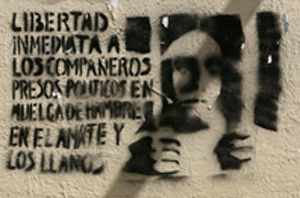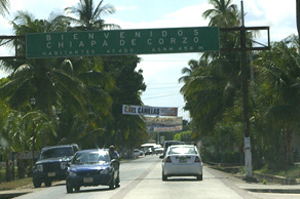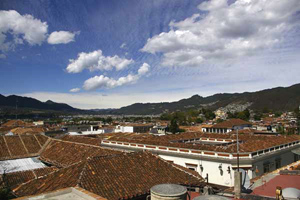
From the roof of the Hotel Virginia you can see most of the city, the red tile roofs of its buildings reaching to the ring of mountains that form the horizon in all directions. It was a great room with a nice private parking spot for only $12 a night.
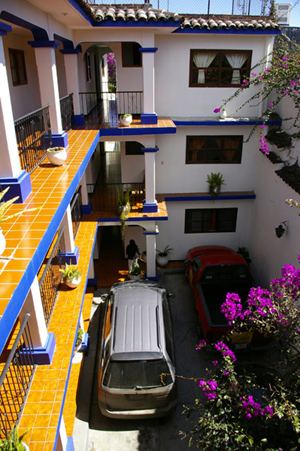
Click this photo to see a page of street art images. There were a lot of these stenciled images, many with political messages. It's hard sometimes to separate the "art" from all the rest of the man-made world. What but art, even if accidental, is the form in which we build our architectural and mechanical world, and our archives of information and knowledge? The wall at the right is likely hundreds of years old, originally made of adobe, then plastered and painted over and over and over and as the layers peel and chip away we're left with nothing less than an image that could as well be from a canvas on an art museum wall.
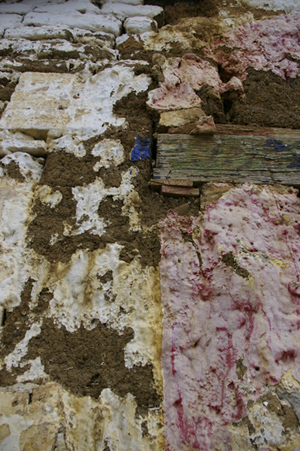
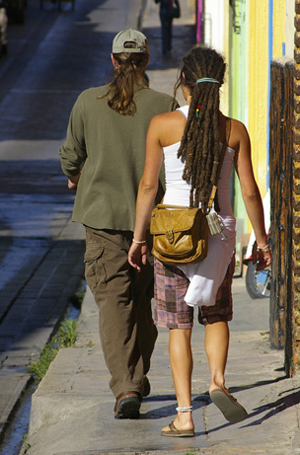
Then there are the people. A lot of young turists from almost anywhere but the US. The fearmongering that's helped shape our culture shows in places like San Cristóbal. And just like our buildings and machines, our clothes and hair display a wealth of artistic inclination.
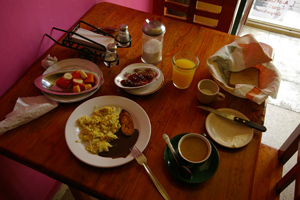
A typical 20 Peso desayuno - coffee, juice, toast or tortillas, fruit, huevos revueltos with beans and fried banana. That's a little over $1.50. This was in a favorite little cafe called Paris. They had some really nice murals painted on the wall on the second floor as well as a few choice pieces of typical local art. See more on the art page.
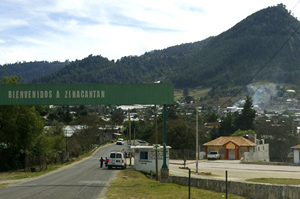
Zinacantan is the first town I can think of that I've been charged to enter. Entry to some of the small, out-of-the-way towns, the inhabitants of which are all indinginous, is closely controled and not unusual to include an entry charge and accompanying pass that must be displayed on your dash. Zinacantan is known for the home-production of the embroidered textiles like the ones worn by the girls in the next picture. They met us at the entrance to the town and the one on your left, Josephina or probably Josefina, made me promise I'd not leave town without going to her home to be sold on her family's wares. The girls in this town showed no hesitation in asking to get into the van for a ride to their respective home shops. Once in the van, they quickly eyed objects of desire and were not shy about asking for "regalos".
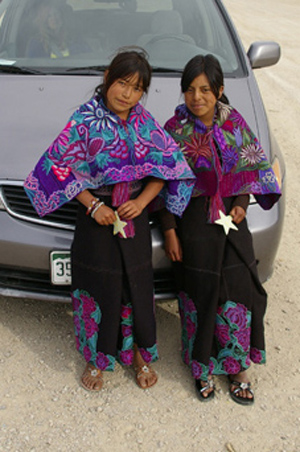
Here we are returning to Chiapa de Corzo for a trip to Cañon de Sumidero. Click the image for more.
